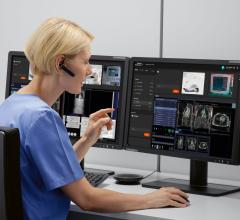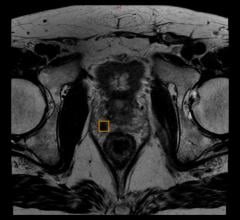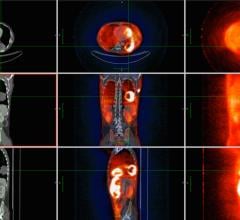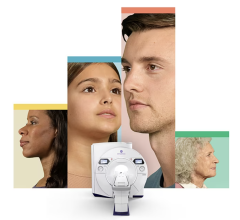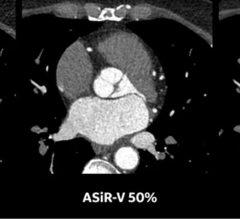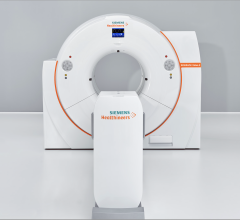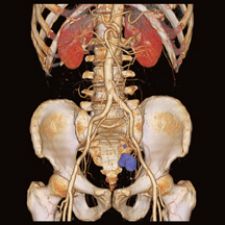
Hybrids such as GE's Discovery VCT marry the high-speed, high-resolution capabilities of CT with the metabolic and physiologic capabilities of PET.
The continued merging of imaging modalities such as PET/CT, SPECT/CT and MR-PET enable clinicians to better integrate the benefits of complementary modalities. The benefits of these hybrids include faster acquisition times with increased performance in resolution and sensitivity. As these combined modalities enhance imaging for cardiology and oncology, clinicians are able to more accurately diagnosis disease, leading to better patient care and, in the long run, a reduced financial burden on healthcare.
According to Hadi Mougarrej, general manager of Molecular Imaging at GE Healthcare, “[Hybrids] have a clear benefit as one-stop shops in cardiac imaging.”
A key advantage of acquiring complete functional and anatomical data in one scan is that it avoids problems with repositioning a patient and co-registering in the case of acquiring both images separately. This makes it possible for less experienced doctors to achieve the same diagnostic accuracy as highly trained specialists.
“The key is being able to get all your information in a single visit,” said Jay Mazelsky, senior vice president and general manager of Nuclear Medicine at Philips Medical Systems.
“With SPECT/CT you can get comprehensive cardiac imaging in a single episode of care so you could do a true cardiac work-up by having both modalities, resulting in greater diagnostic confidence. Each modality has a best-in-class characteristic, so CT gives you the anatomical localization, while SPECT gives you some of the diagnostic confidence around metabolic function.”
According to Wm. Guy Weigold, M.D., director of Cardiac CT, Div. of Cardiovascular Disease at Washington Hospital Center (D.C.), hybrid imagers offer optimal viewing of the coronary vessels, as they are “rather torturous and complicated in the way they are laid out around the heart.”
“PET/CT is a great way to obtain cardiac functional data from the PET scan and then detailed anatomic information about the heart and the coronary arteries from the CT angiographic data,” he said.
MR-PET offers new insight into neurological disorders
While it is still undergoing research, MR/PET presents a tremendous leap forward in imaging by bringing the exceptional soft tissue contrast and high specificity of MR together with PET’s excellent sensitivity in assessing physiological and metabolic state.
“MR does soft tissue content as well as simultaneous data collection. When imaging a patient, that patient’s condition could change five minutes or even five seconds later. Being able to do PET and MR at exactly the same time can be an advantage,” said Mazelsky.
Researchers expect that MR-PET will open new doors in understanding the pathologies and progression of various neurological disorders like Alzheimer’s, Parkinson’s, epilepsy, depression and schizophrenia.
Cancer types identified and targeted
Nuclear medicine has traditionally focused on radiopharmaceuticals trapped in organ structures and the presence of disease hallmarked by the absence of activity. Exams are then followed with additional procedures, such as a biopsy, to determine the particular disease.
According to Mazelsky, molecular imaging with SPECT/CT offers a different view on traditional SPECT imaging, as newly developed SPECT tracers are target-specific, attracted only to the tissues they’ve been designed to find.
“With agents now entering the market you can actually diagnose a specific type of cancer such as prostate or bladder cancer as opposed to just cancer,” he said.
With MR/PET, clinicians may gain a more sound determination of both cognitive impairment and atrophy of diseases such as Alzheimer’s, as well as the ability to utilize neurological biomarkers. Similarly, MR/PET may allow physicians to study which brain tissues might be salvageable after a stroke.
“Ultimately, [MR/PET] will enable early treatment and highly personalized therapies,” said Lothar Spies, M.D., head of the Digital Imaging Department at Philips Research.
One stop means time and money saved
Hybrid modalities may also offer financial savings for both a hospital and a patient, as smaller numbers of staff will be needed for diagnosis.
“With hybrids you can make a diagnosis within a single episode,” said Mazelsky. “Instead of going to a nuclear medicine department and then to the department of radiology.”
According to Mazelsky, both Medicare and private payers may benefit financially from a hybrid, as some insurance will not reimburse for a second independent exam.
“The economic savings for [hybrids] really comes down to being able to get a diagnosis much quicker, without having to swim around looking for different possible causes of a patient’s condition,” said Mazelsky. <


 February 15, 2024
February 15, 2024 
